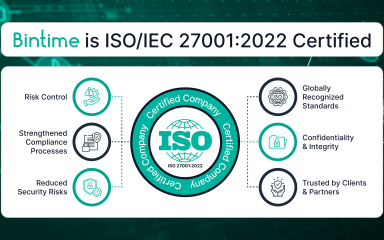Managing a business without sufficient cash flow is like trying to drive a car without a steering wheel. Not only is it next to impossible, but you are guaranteed to drive your business in the wrong direction – or even off the road. That’s why strong cash flow management is important for all businesses and startup businesses that have a solid cash flow management plan in place early have a better chance of making it.
This article was originally published at Apruve.com
If you don’t manage your business cash flow in your first year, you’re probably not going to make it to the second year… In fact, 82 percent of businesses close due to insufficient cash management. – US Bank
To determine the status of your cash flow management, analyze these three crucial elements:
- Accounts receivable: What customers and clients owe you
- Accounts payable: What you owe your suppliers or creditors
- Accounting method: Accrual vs. cash accounting
You have to effectively manage all three if you want to ensure healthy cash flow in your business. Read on to learn more about how to properly manage your business cash flow management.
1. Start with a Break-even Baseline
The first step to properly managing cash flow in your business is to know where your “break even” point is, this is the point at which your business becomes profitable. Once your business becomes profitable, you have entered a new business life stage.
Not only will knowing the break-even point help you to learn and understand the ebbs and flows of sales and cash flow in your business, but it will also give you a target goal to reach. Being aware of this baseline will help you to stay on target, pushing you and your team to make more sales, which generates future profits.
2. Focus on Managing Cash Flow Rather than Profits
This may sound contradictory to #1, but it’s not. Use your break-even point as a benchmark. After you reach break-even and your business is profitable, your job isn’t done. You still need to manage your cash flow. This is a common mistake that startup entrepreneurs make that end up costing them – quite literally.
It may be obvious, but it’s important to remember that negative cash flow and negative profits combined are a recipe for disaster. In the beginning stages of your business, focus more on managing cash flow rather than profits. Once you have a solid cash management strategy in place, and your business is generating steady revenue, you have reached the next level in the life of your business.
3. Save Some Cash Reserves
Every business has ebbs and flows. Every business. Depending on the type of business you own or operate, you make have peak seasons and slower seasons. In order to ensure a healthy cash flow through the slower periods, have a solid cash reserve. This will help you get by during slower periods. In fact, the overall success of your business will depend on how you manage these shortfalls. Having a cash reserve is not only a good idea for proper cash flow management, it’s also good for your stress levels.
4. Use a Cash Flow Worksheet
If you don’t work with a bookkeeper or accountant, then you may find it helpful to keep a cash flow worksheet. This could be an Excel spreadsheet or a Google sheet. There are also a number of free cash flow templates and resources you can find online. By taking the time to refer to your cash flow worksheet, you will not only have control of your cash management but it will also help you to know exactly where your business strands in terms of cash flow and sales every month.
5. Monitor Accounts Receivable
Most business owners and entrepreneurs would agree that one of the worst parts about running a business is chasing after clients or customers to pay. Be sure to keep invoice and contract terms to a minimum, such as 30-net terms. Depending on the amount of your invoice, you can also dictate that payments are “due upon receipt”.
All in all, it’s important to keep a close and keen eye on receivables and contacting customers to collect payments. If you do not have the time to do this, then delegate this task to a partner or team member whom you trust.
6. Review Your Current Payment Terms
In order to politely “light a fire” beneath your customers to get them to pay faster, consider offering early payment discounts and keep invoice terms and requirements strict. For example, you can implement late payment policies. Be sure to document all terms, policies, and requirements accordingly, so you can properly manage customers’ expectations when working with your business.
7. Be Mindful of Accounts Payable
On the other hand, while you are waiting for customers to pay, extend your payables for as long as you can. For example, some businesses that require job materials or work with suppliers will have a higher amount of receivables. Extend your payables to net-60 or net-90, if possible. However, be sure to also watch suppliers’ late fees and pay on time. You want to ensure your business also has healthy credit in addition to having healthy cash flow.
8. Increase Sales with Incentives and Promotions
If your business is struggling to boost sales, then why not consider an offer, discount, event or promotion? For example, some ways to quickly boost sales might include sponsoring a contest, hosting a customer appreciation event, offering referral incentives, or taking your employees on a publicity tour. Learn your customers and buyers to determine the type of offer or promotion that would appeal to them best. Running just any promotion will end up just being a waste of time and money.
9. Leverage Technology
In addition to using a cash flow management worksheet or spreadsheet, leverage technology to make it easier on yourself and be sure that your worksheet is available on the cloud, such as Google Drive, Dropbox or OneDrive so that you can access it anywhere. You can also use professional accounting software, such as QuickBooks to help you manage cash flow and expenses. Whichever technological avenue you choose, be sure your files are secure at all times.
All in all, managing business cash flow management is crucial to overall success and survival of your business. If you are currently experiencing challenges with your cash flow management, be sure to be proactive in taking the necessary steps to resolve them. This will only help your business in the long run.
Finally, as long as your cash flow stays positive, your business will be able to survive during periods of little sales or cash flow or other troubling times. You can also be proactive in projecting future sales and cash flow by analyzing historical financial data. This will take the guesswork out of managing cash flow, and it will help you sleep better at night.











